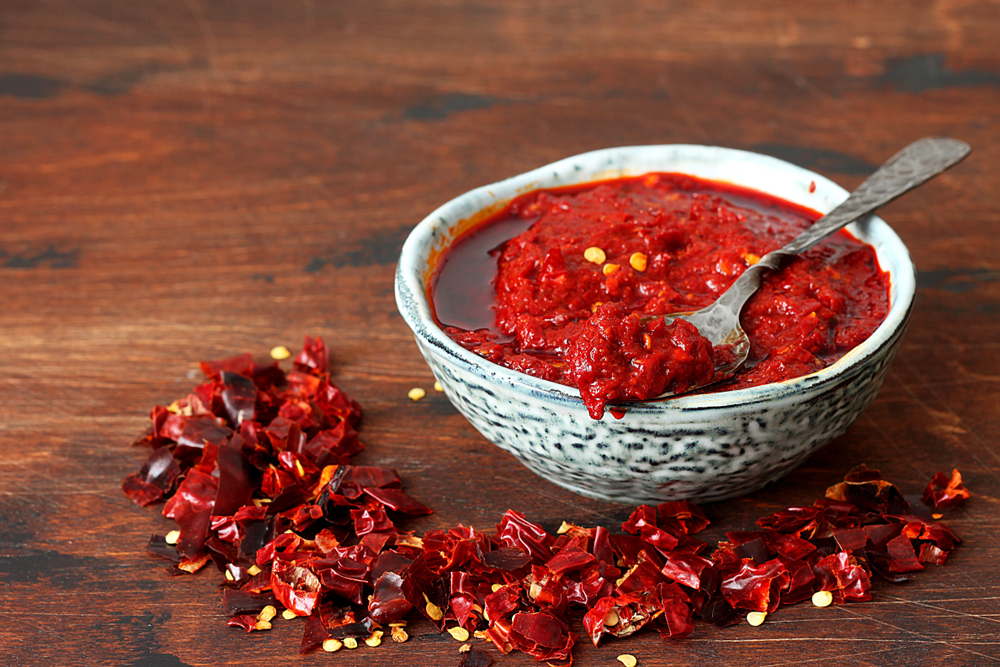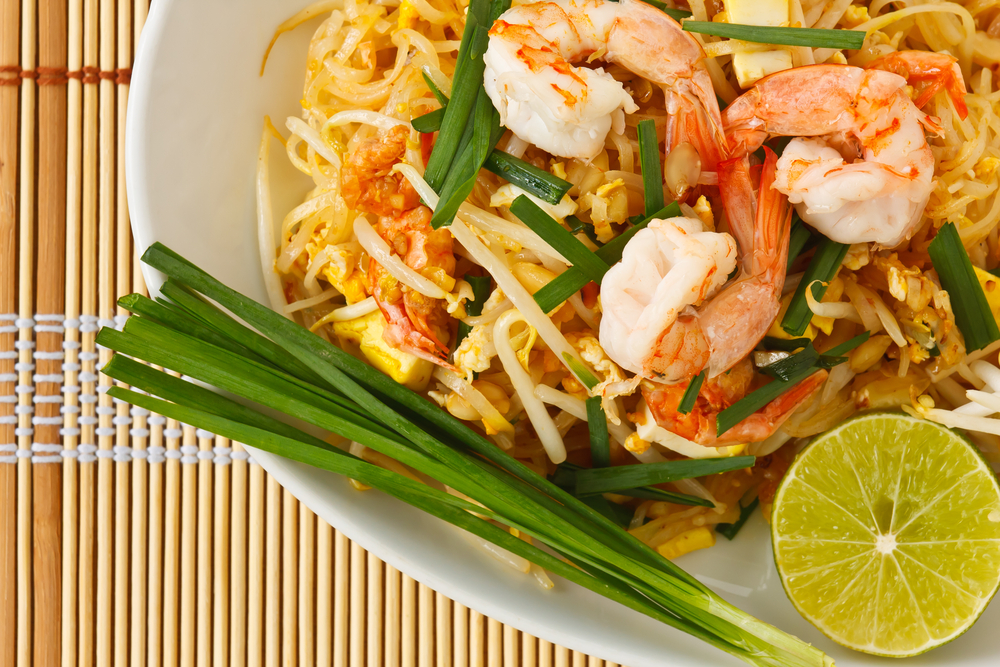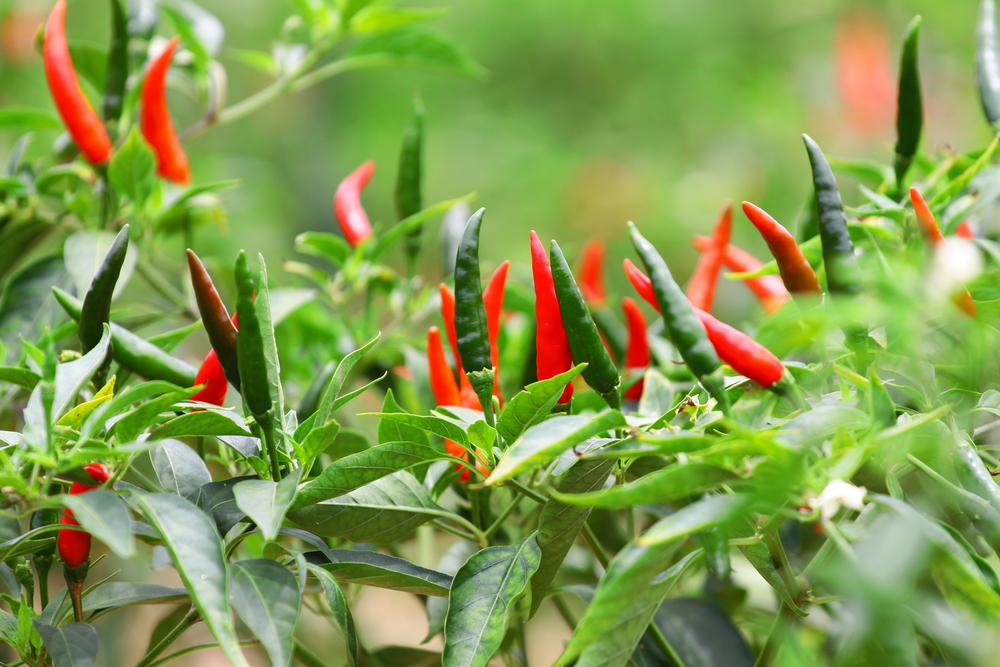Curry is not only about the aroma and taste, but also about the fragrance. That’s why everyone loves curry so much!
Fortunately, there are many curry paste substitutes that you can use in place of your usual curry paste to get a similar fragrance and taste. These substitute curry pastes have similar fragrances and flavors too.
Therefore, replacing your regular curry paste with one of these substitutes is totally fine as well.
Try replacing your favorite Green Curry Paste with red curry paste, yellow curry paste, curry powder, and harissa paste, or make your own.
What is Thai Green Curry Paste Made of?
It’s green due to the pureed green chili peppers that give it a hint of spice. But that’s not all you find in green curry paste.
The other aromatics can include shallot, garlic, fish sauce, oil, lemon grass, onion, shrimp paste, ginger, coriander seed, and lime peel (kaffir).
What Does Green Curry Paste Taste Like?
As with many Asian-influenced cuisines, Thai green curry paste is all about the umami flavors. The 5th flavor sector on your tongue.
Green curry paste is warm and spicy with herbal notes that finish with an unexpected sweetness. Shrimp paste provides those deep umami flavors.
While containing green chilies, green curry paste is not as spicy as the Thai red alternative, but spicier than Thai yellow curry paste.
What is the Difference Between Thai Green and Red Curry Paste?
The only difference in ingredients between green curry paste and red is the chilies used. Thai Red Curry Paste uses red chilis instead of green.

What is a Good Substitute for Green Curry Paste?
1. Thai Red Curry Paste
Thai curry pastes can be used interchangeably. Feel free to substitute a red curry paste for your green curry paste.
The flavors and intensity will definitely be different, but that might not be a bad thing for you.
Start with less than you would typically add if you’re using a new-to-you paste and adjust to your personal tastes.
Different color, slightly spicier, but still an excellent green curry paste substitute.
2. Thai Yellow Curry Paste
This yellow paste mimics Indian curry more than the previous pastes.
While sharing many of the same ingredients with green curry paste, yellow curry paste also has turmeric, cardamom, nutmeg, cinnamon, cloves, and curry powder.
While you’ll also find red or yellow chilies, there are much lower quantities than green curry paste and only a hint of spiciness.
If you like the spice, add in some extra chilies, but if you don’t like spice Thai yellow curry paste is an excellent green curry substitute.
3. Curry Powder
It seems simple enough to just add curry powder.

The flavor profiles will be distinctly different, but if you have nothing else to substitute for your Thai green curry paste, then add some curry powder to do the trick.
In general, you can usually add 1 teaspoon of curry powder for every 1 tablespoon of curry paste.
If you like milder flavors, make sure to start slow. It’s really hard to fix something that’s too hot.
4. Panang Curry Paste
Sharing many ingredients with Thai green curry paste, Panang curry paste works well as a green curry paste replacement.
This paste has a richer flavor profile with the addition of peanuts, kaffir lime leaves, cloves, and cardamom.
Be aware this is not an appropriate alternative for those with peanut allergies or those that don’t like spicy food.
Comparatively, Panang curry paste has quite a bit more chilies than Thai curry paste.
If you’re not familiar with this flavor profile, add a little bit at a time and build to the desired taste.
5. Indian Vindaloo Curry Paste
Sharing some similar ingredients like cumin and coriander seeds, vindaloo curry paste can work as a replacement for green curry paste.
With black pepper and red chilies, you can get pretty close to the flavor profile of green curry paste.
With additional ingredients like cinnamon, cardamom, fennel, and cloves, vindaloo’s flavor profile has a richer depth to it that may actually enhance your non-traditional dish.
Vindaloo curry paste works well with meat, seafood, and vegetable curries.
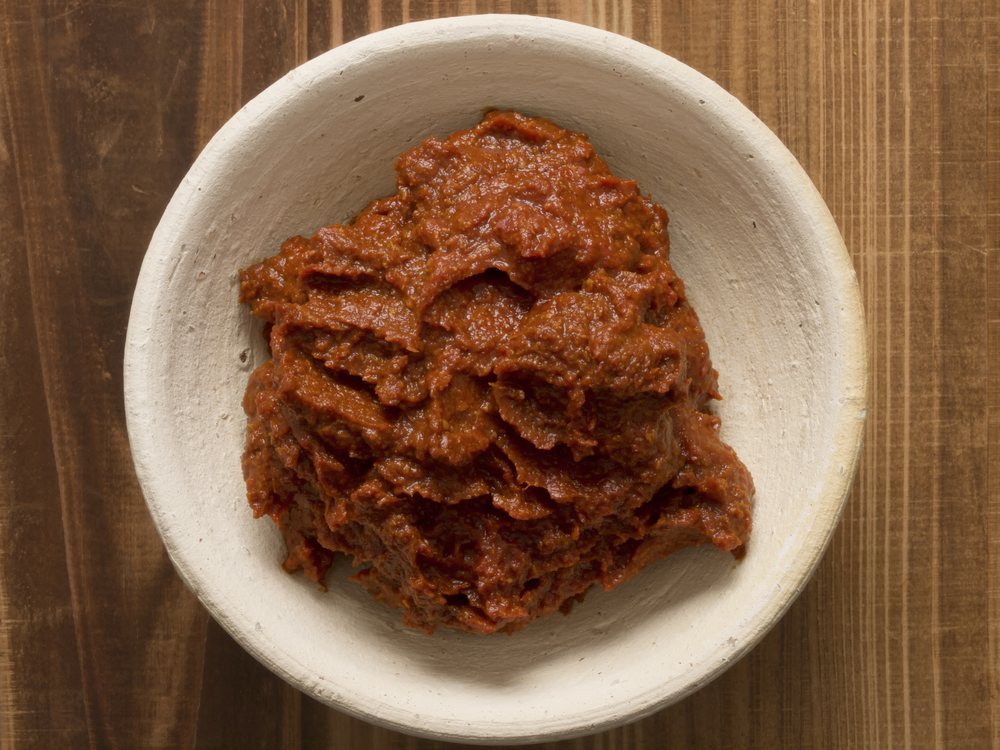
Try mixing in some lemongrass, shrimp paste, lime zest, and cilantro to really achieve that desired green curry flavor profile.
6. Green Harissa Paste
This spicy, aromatic paste not only matches closely in flavor but also in color to green curry paste and makes an excellent replacement.
Using jalapeno peppers for spice rather than chilies, green harissa paste also contains mint and parsley.
Great for stir-fries and mixing dishes, green harissa works in a pinch. If you really want a matching flavor profile, add in some ginger and shrimp paste too.
As with the others, add a little at a time until you achieve your desired flavor profile.
7. Massaman Paste
Massaman curry paste can be an adequate green curry paste substitute as it shares many of the same ingredients.
While it won’t replace those traditional flavors entirely, it will work in a pinch and get close. With added cinnamon and peanuts, massaman curry paste has a slightly sweeter flavor compared to green curry paste.
Massaman is also relatively easy to find and carried by most Asian grocers.
8. Chermoula
Chermoula is a Mediterranean mix that’s used to flavor meat, seafood, and vegetable dishes.
Used as a marinade and condiment, Chermoula makes a great green curry paste substitute in similar situations or for mixing with rice dishes.
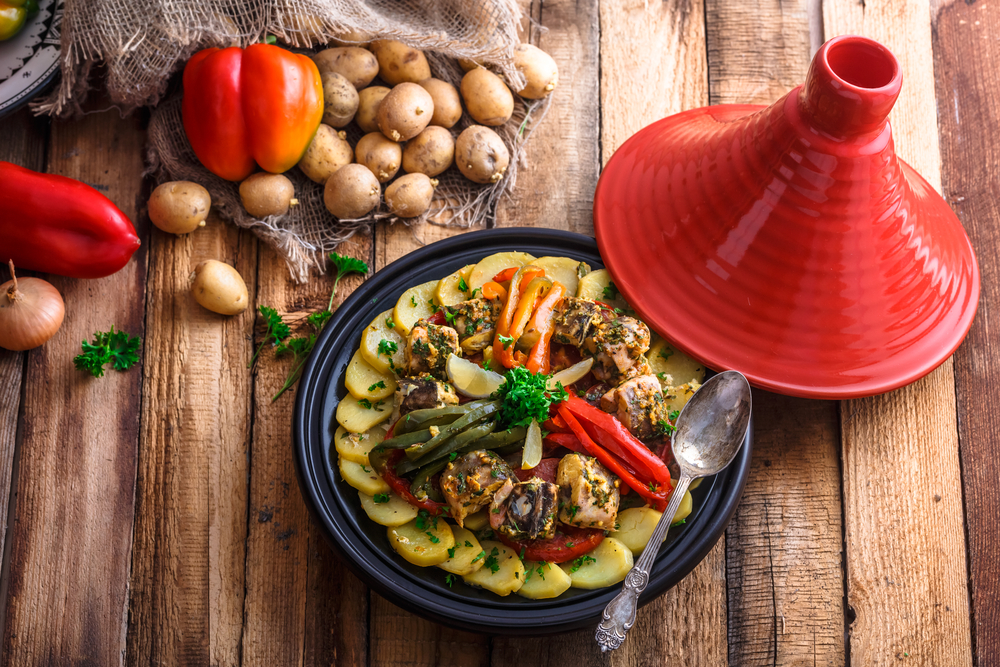
With similar ingredients or equivalent ones like lemon zest or juice instead of kaffir lime, chermoula builds a very similar flavor profile.
This dark, oily mixture is strong. Use sparingly at first until you find the right amount for you.
9. Lemongrass Paste
Don’t underestimate this paste. It makes a good green curry paste substitute.
A great paste for stir-fries, stews, marinades, and soup bases, Lemongrass paste has enough similar ingredients to provide that flavor you’re looking for.
The spice is provided by jalapeno peppers and those umami notes from anchovy paste.
While it won’t provide you with authenticity, it will provide those flavor profiles you’re looking for.
The lemongrass flavor is strong and can be overpowering in some cases. Start out small and work up.
10. Laksa Curry Paste
Laksa Curry paste is probably the easiest curry paste to acquire as it’s carried in most supermarkets, online retailers, and Asian grocers.
If you need to save your dish now, Laksa curry paste is a decent green curry paste substitute.
You won’t achieve that lovely green hue with this paste, but it can still come close to the flavor profile as they share many similar ingredients and has a depth created by cashews and peanut oil.
This is in no shape a replacement for a traditional green curry dish, but good enough to not lose out on your meal entirely.
It’s especially useful in soup bases, stews, stir-fries, and marinades.

Due to the peanut oil, those with nut allergies should choose a different substitute.
As always, start to add slowly and build up to your preferred flavor intensity.
Can You Make Thai Green Curry Paste at Home?
If you’re talented in the kitchen, then of course you can make your own Thai green curry paste.
Any homemade version will be just as good, if not better than those you can get at the store. You wouldn’t have to worry anymore if you couldn’t find it either.
Any authentic Thai green curry recipe could come off without a hitch.
How to Make Homemade Green Curry Paste
You’ll need green chilies, coriander, a small onion, lemongrass, ginger, lime, and some neutral-flavored oil. You can also throw in some garlic, turmeric, and cilantro.
If you can get it, replace the ginger with galangal. This root is commonly used in Thai cooking that’s very similar to ginger with a more pepper and citrus flavor.
For those umami flavors, make sure to use shrimp paste.
Getting all the ingredients is the hard part. Once you have all of them, de-seed and dice as needed, and then puree them in a blender or food processor.
Your homemade green curry paste will last in the fridge for a few weeks or you can freeze it for long-term storage.
Frequently Asked Questions
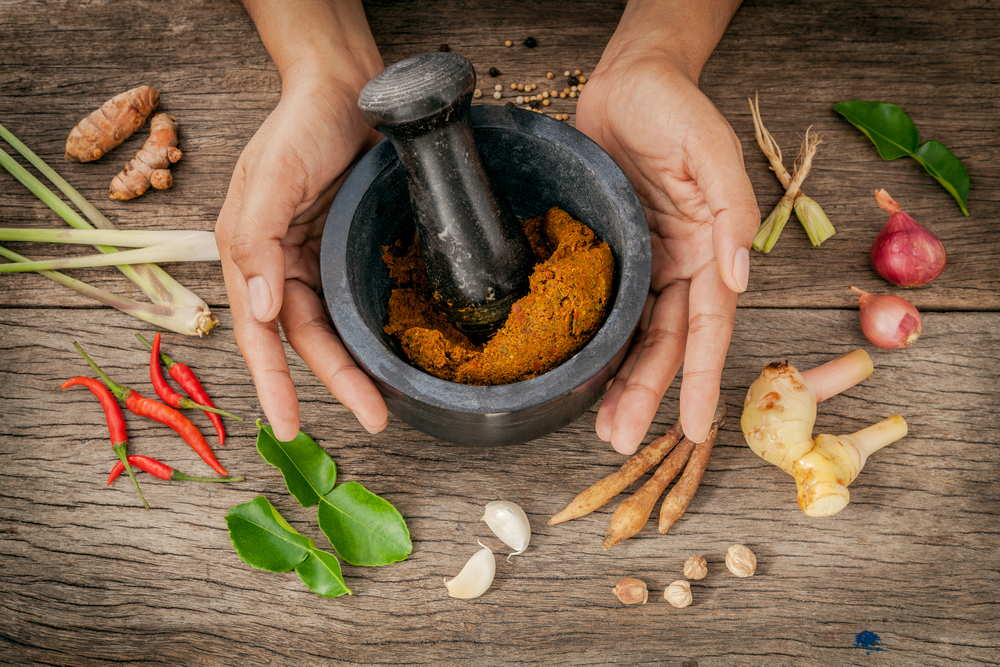
Are red and green curry pastes interchangeable?
No. With many of the same ingredients, red curry paste uses red chilies and will differ not only in color but also in spice level.
Red curry paste is far more intensely spicy.
Is Thai green curry healthy?
Any curry carries an incredible dose of anti-inflammatory properties.
While traditional green curry dishes tend to be high in fat due to the other ingredients it’s paired with, green curry also brings a lot of beneficial nutrients, minerals, and protein to the table.
It’s actually an excellent source of iron and vitamin A.
Does Thai green curry have shrimp paste?
Yes. Those desired umami flavors are provided by shrimp paste.
Final Thoughts
Curry is a vast and varied cuisine that has influenced many parts of the world. From the Indian subcontinent to Southeast Asia, from Africa to the Americas and beyond, you’ll find curry on every continent.
Curry can be made from a variety of spices and herbs, including turmeric, coriander, cumin, garlic, chilies, ginger, pepper, salt, cinnamon, cardamom, ginger, and more.
Certain spices and herbs are used more often than others depending on your taste and preference.
Depending on where you live and what you’re cooking, you can use different types of curry pastes to customize the flavor profile of your dish. With all the varieties available, there’s always something to use as a substitute for green curry paste.
When you make your own curry paste, you can customize the flavor and intensity to your liking.


